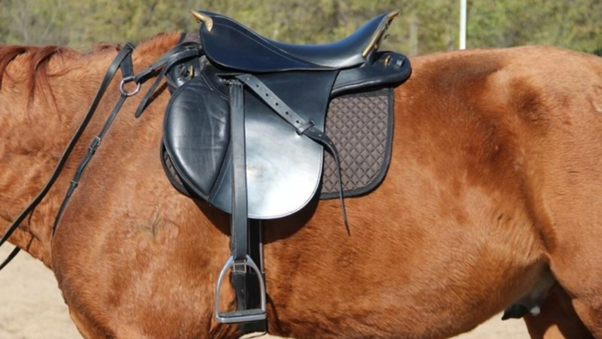Choosing the right horse saddle can feel overwhelming, especially for beginners. With so many types, sizes, and materials to consider, it’s crucial to find the perfect fit for both you and your horse. In this article, we’ll guide you through the process of selecting a saddle that meets your needs, ensuring comfort and safety for both you and your equine partner.
Understanding Saddle Types
Before diving into specifics, let’s look at the various types of saddles available. Understanding the differences can help you narrow down your options.
1. English Saddles
● All-Purpose Saddles: Versatile for jumping and dressage, suitable for beginners.
● Jumping Saddles: Designed for show jumping, featuring a forward flap.
● Dressage Saddles: Focus on balance and leg position, promoting better communication with the horse.
2. Western Saddles
● Ranch Saddles: Built for long hours of riding, often heavier with a deeper seat.
● Barrel Racing Saddles: Lightweight and designed for speed, ideal for competitive riders.
● Trail Saddles: Comfortable for long rides, with features like padded seats and plenty of rigging for attachments.
3. Other Specialised Saddles
● Endurance Saddles: Lightweight and comfortable for long-distance riding.
● Saddle Seats: Often used for gaited horses, focusing on comfort and support.
Assessing Your Needs
Understanding your riding goals is essential. Are you planning to take riding lessons, go on leisurely trail rides, or participate in competitions? Your activities will significantly influence your saddle choice.
Measuring for the Perfect Fit
Once you have a general idea of the type of saddle you need, it’s time to measure for the perfect fit.
1. Girth Measurement
● Measure around the horse’s girth, just behind the front legs. This helps in selecting the correct size for the girth and saddle.
2. Withers Width
● Assess the width of your horse’s withers (the ridge between the shoulder blades). This is crucial for saddle fit. A saddle that’s too narrow can pinch, while one that’s too wide can slip.
3. Back Length
● Determine your horse’s back length to ensure the saddle doesn’t interfere with the horse’s movement. The saddle should sit comfortably on the horse’s back without extending too far forward or back.
Choosing Saddle Material

Saddle materials can vary significantly in terms of comfort and maintenance. Here are the most common types:
1. Leather
● Long-lasting and can last a lifetime with regular care. It provides a traditional feel but may require regular maintenance.
2. Synthetic
● Lightweight and often easier to clean. Synthetic saddles can be a great option for beginners as they are generally more affordable.
Before making a final decision, it’s crucial to test the saddle. Here are some tips:
1. Trail Ride: If possible, try riding in the saddle. Pay attention to how it feels while you ride and how your horse reacts.
2. Check for Movement: Ensure the saddle stays in place during various gaits. It shouldn’t shift excessively or cause discomfort for your horse.
3. Look for Pressure Points: After riding, check for any areas where the saddle may have caused rubbing or pressure on the horse’s back.
Budgeting for Your Saddle

Saddle prices can range from budget-friendly to high-end. Consider the following:
● Invest in Quality: A well-fitting saddle is an investment in both your comfort and your horse’s wellbeing. It’s often worth spending a little more to get a quality saddle that fits correctly.
● Used vs New: If you’re on a tight budget, consider buying a second-hand saddle. Just ensure it’s in good condition and fits both you and your horse properly.
Accessories to Consider
When choosing a saddle, don’t forget about the essential accessories that will enhance your riding experience:
● saddle blanket: Deliver protection and security for your horseback
● Girth: A well-fitted girth is crucial for keeping the saddle secure.
● Stirrups and Leathers: Ensure they are the right size and fit for your leg length.
Maintenance Tips
Once you’ve chosen your saddle, it’s important to keep it in good condition:
1. Regular Cleaning: Clean your saddle regularly to prevent dirt and sweat buildup.
2. Conditioning: Use a saddle conditioner to keep the leather supple.
3. Storage: Store your saddle properly, ideally on a saddle rack to maintain its shape.
Conclusion
Choosing a horse saddle as a beginner can seem daunting, but with the right knowledge and preparation, it can be an enjoyable process. Focus on your needs, take the time to measure and test different options, and don’t rush the decision. The right saddle will not only enhance your riding experience but also ensure your horse’s comfort and wellbeing.
FAQs
1. What is the best type of saddle for beginners?
An all-purpose English saddle or a comfortable western trail saddle are great options for beginners due to their versatility.
2. How do I know if a saddle fits my horse?
A properly fitted saddle should sit evenly on the horse’s back without pinching the withers or creating pressure points.
3. Can I use a second-hand saddle?
Yes, as long as it is in good condition and fits both you and your horse properly.
4. What should I look for when trying a saddle?
Pay attention to comfort, stability, and how well it fits your horse. Ensure it doesn’t shift or cause discomfort.
5. How often should I clean my saddle?
Clean your saddle after every ride to maintain its condition, and condition it regularly to prevent the leather from drying out.










